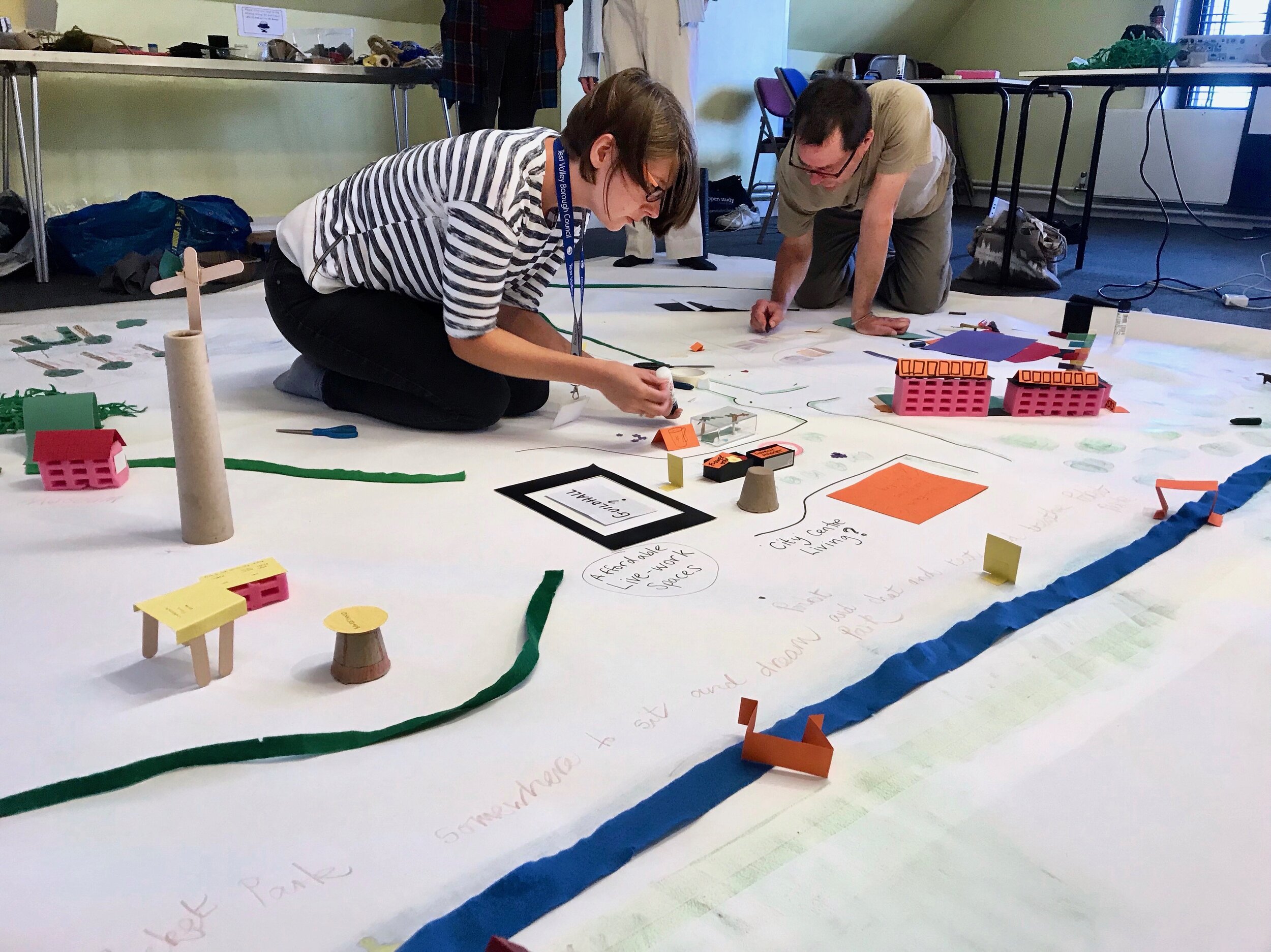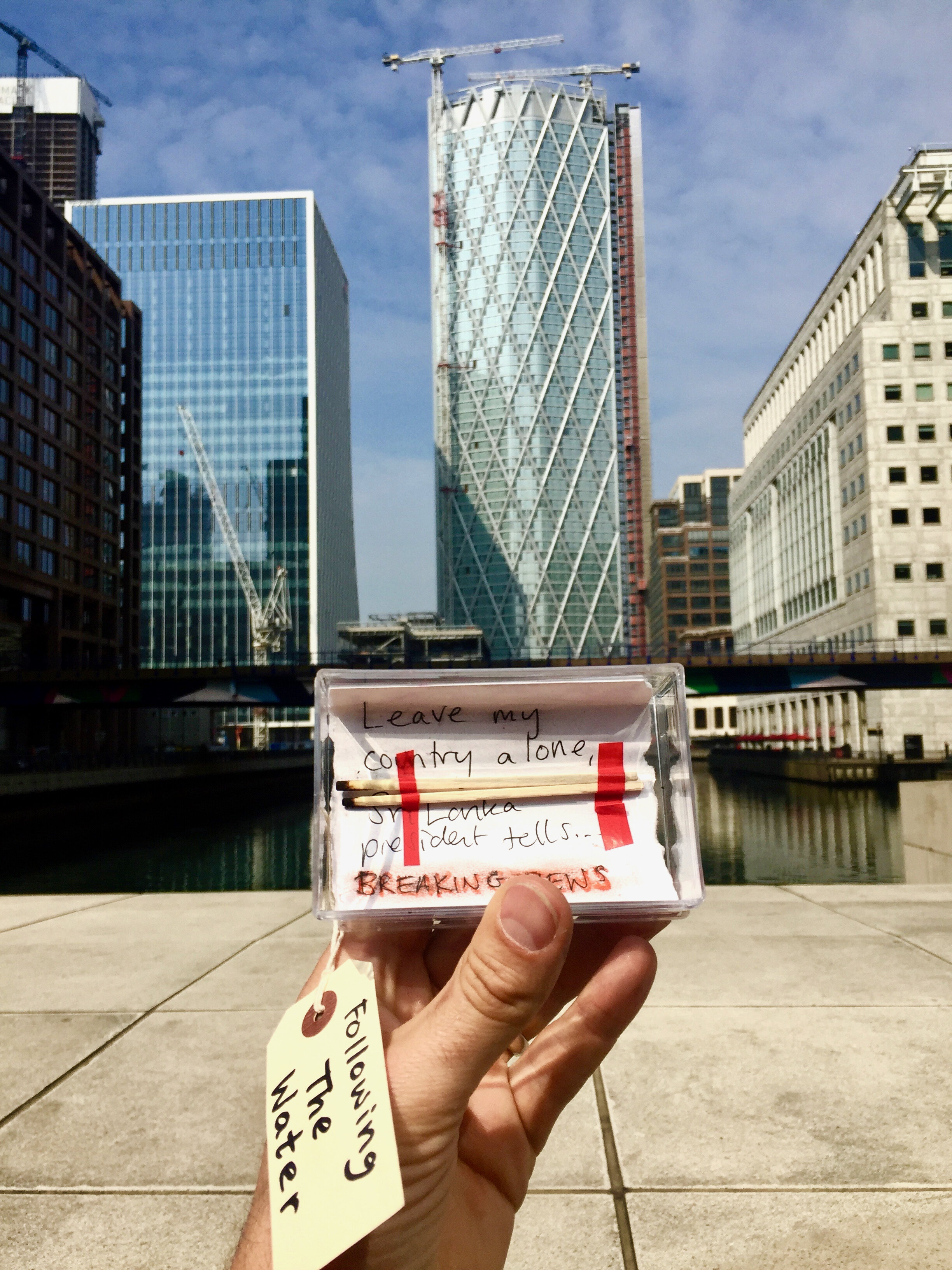11 questions with James Aldridge
The Eye of the Forest (James Aldridge)
This month, I spoke with contemporary artist James Aldridge about his interest in climate and biodiversity, participatory art, the Climate Museum UK, and one of his newest projects, Queer River. Take a look!
1. How would you describe your arts practice?
My practice focuses on using visual arts processes to set up a dialogue between myself and other people, animals, plants and places. I’m interested in the value of such processes for the development of ways of being with each other, that are based on interconnection, and individual/planetary wellbeing.
2. Where does your interest in climate and biodiversity come from?
I’ve always used art as a way of exploring the relationship between humans and other beings. So as the magnitude of the current earth crisis became apparent, it made sense for me to be more explicit, advocating for arts practices that engage communities in talking about the crisis, and taking action to mitigate its effects.
Walking Pages (Stanton St Bernard)
3. What are your interests in interactive and participatory art?
My work combines individual, collaborative, and socially engaged practices. During my career I’ve worked with a wide range of organisations, and participants from babies to PhD students, researching the value of art within learning, and more specifically within outdoor and place-based learning. I see art as a living, breathing process, with art objects as evidence of that process.
4. What's your relationship with nature?
That's a bit of a tricky one… the word ‘nature’ itself is difficult for me. It is used by lots of people who are doing really positive work and inspiring others to do the same, and yet for me it perpetuates the idea of there being a human/nature split, an ‘us and them’.
Obviously when people are talking about ‘saving the environment’ or ‘being in nature’, their intentions are good, but they are acting from the same position that allows us to use and abuse ‘nature’, a belief that we are somehow separate. I believe that we are ‘nature’, and that sometimes art can give us an opportunity to experience that interrelationship, our indivisibility. Having said all that, I appreciate it’s not always easy to find another word to use.
5. What is the Climate Museum?
Climate Museum UK is a mobile and digital museum, a distributed museum consisting of a team of artists, designers, curators and others, based around the UK, who work together to enable other organisations and communities to talk about and take action on the earth crisis.
Climate Museum UK was set up by Founding Director Bridget McKenzie, and I was invited to join the team as an Associate about 18 months ago. During my time with CMUK I’ve worked with the Hayward Gallery to run workshops for children and teachers at the Among the Trees exhibition in early 2020, and developed online events and resources in collaboration with other team members. (Climate Museum is a different museum based in New York).
CMUK Workshop at Hayward Gallery
6. What is Queer River?
Queer River is an arts-based research project that I’ve set up to explore my and others experiences of and perspectives on rivers. I’m interested in how Queer perspectives, that sit across or outside of binary divisions such as masculine/feminine, can enable us to see beyond other boundaries such as human/nature or water/land, can provide us with new ways of seeing and being with rivers.
During the length of the Queer River project I will be walking, talking and making with other artists, writers, researchers and members of the LBGTQ+ community, along two rivers that start their journey near to my home in Wiltshire, the Hampshire Avon and the Bristol Avon. Together we will explore the intersection between our experiences, our practices and our ways of knowing rivers. From there I’m planning on widening the work to include other rivers and river ‘experts’.
Queer River, Paper Boat
7. What materials do you work with?
I like to allow the subject matter to inform the materials that I use. Often I am documenting my experiences of different places, and to do this I use sound, video, drawing, writing or photography, or make one of my Walking Bundles, from materials gathered along the way. Commissioned or other exhibited work can take the form of video or photographic pieces, sculptural installations, or writing, and much of my work is participatory in some way.
Walking Bundles (Doll Bodies)
8. What's one of the most memorable projects you've ever worked on?
The Interbeing exhibition that I set up at Pound Arts in Corsham in early 2020 was an important experience for me for both professional and personal reasons. It was the first exhibition that I had been involved in since a period of professional development supported by an A-N bursary, including mentoring from Rosalind Davis, and it was the first time that I had exhibited with my husband, the artist Jonathan Mansfield.
Together we set up an exhibition that explored the concept of Interbeing, as developed by Thich Nhat Hanh, and ran events to engage people in discussion around the themes of the exhibition. It’s that kind of approach that excites me, one that combines research and making with talks, walks and discussions. I’m not keen on just leaving my work at an exhibition and walking away, I want to learn and develop from the experience, and hear from the people that come to see it.
9. What's the one piece of art you'd love to make, but haven't yet?
At the moment my focus is on my Queer River work. It’s new and I’ve some really interesting people lined up to work with me. It’s exciting because it’s something I’ve set up for myself and it can go in whatever direction it needs to, from river restoration and rewilding, to health and wellbeing, or performance art. It’s designed to be fluid and responsive, and I’m looking forward to being surprised and educated by where the rivers and my collaborators take me.
10. What's your favourite part of the creative process?
It’s hard to separate out any one part. I enjoy the planning, the moment when I come together with others and the ideas and inspiration start flowing. And as the work starts to evolve, I enjoy the experience of having a loose focus, allowing it to go where it needs to. Each project or residency is a learning process, learning through dialogue, through relationship, discovering your true nature through creative interaction with human and non-human others.
Mapping the Future Workshop (Asking Andover Residency)
11. What’s the best piece of advice you ever received?
This isn’t something that anyone has actually said to me, it’s more something that I’ve learned along the way, and that is to be yourself, as fully as you’re able.
There’s so much pressure, starting at art college, then all the way through your career, to make particular kinds of work or to use a particular kind of language, in order for your work to be noticed by the ‘right’ people.
For me, the learning that I take away from Queer River and all the research that I’ve carried out before it, is that each of us brings a unique and much needed perspective to our work and our relationships. Being different, being queer, can be hard, but if you can come through the hard bits, it can also give you a unique and valuable perspective on the world.
Following the Water (Urban Rural Exchange with Karen Wood)
Thank you for reading. For more information about James’ work and some of the projects named above, visit:
Stay tuned for more 11 questions with artists, makers and creatives coming your way soon. Never miss an issue by subscribing to my mailing list, and in the meantime feel free to take a look at my blog and some of my work as an artist.







